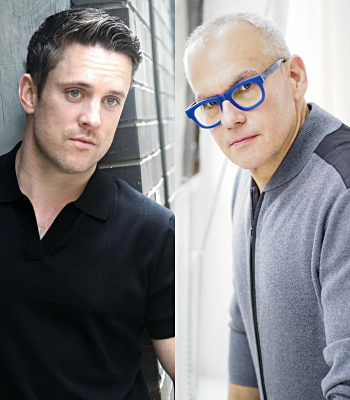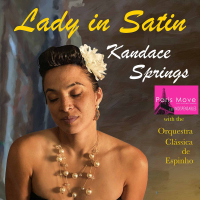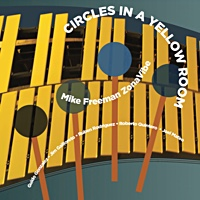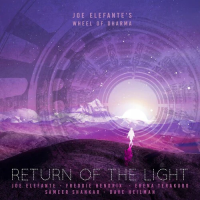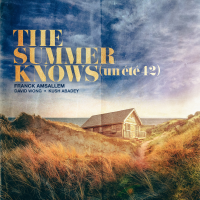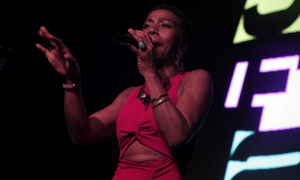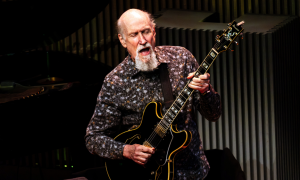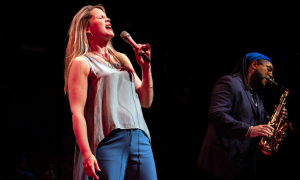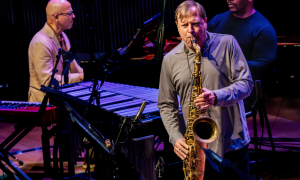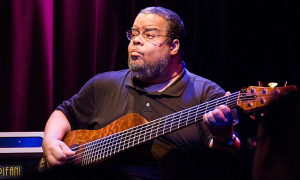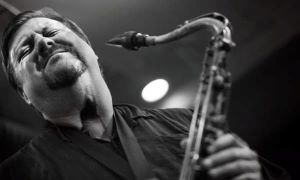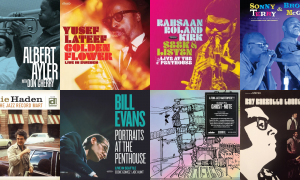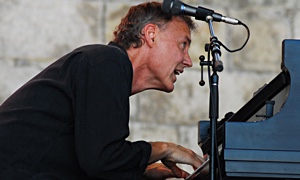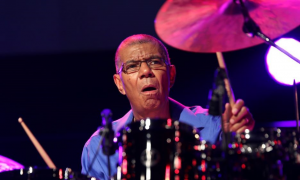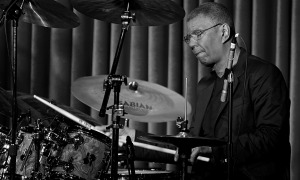Home » Jazz Articles » Live Review » Downtown Music Gallery All Star Benefit
Downtown Music Gallery All Star Benefit
January 10, 2003
Tonic, NYC
When the bastion and maven store of avant-garde music, Downtown Music Gallery, sought to hold a benefit in honor of its upcoming relocation, all it had to do was call up a couple of its friends and secure an evening at the other bastion of avant-garde music, Tonic, and that was that. Maybe it was not that easy, but the inspiring result of those two musical epicenters coordinating an event was an awesome lineup of jazz and progressive music's most interesting and talented performers.
The evening had begun with big names such as Mathew Shipp, John Zorn and Matt Maneri. I was there for the second set, which featured guitarist Gary Lucas, Susie Ibarra's Mephista, and John Zorn and Dave Douglas. Each of the musicians and composers who had or were to play that evening, in one way or another had established themselves as creating not just quality music, but music that reaches beyond the expected. Everyone there that night was handpicked for a reason.
Gary Lucas
The second set began with Gary Lucas, a downtown veteran whose music was most popularized with rock star singer Jeff Buckley. Mr. Lucas exuded the blues. Armed with a black leather hat, steel top guitar and weathered voice, Lucas sat alone on stage conversing with us through musical narrative and a raspy guitar tone and layered rhythm. His music ranged from instrumental pieces from his first album in 1988 at The Knitting Factory called 'Sounds from China' to singing narratives such as 'The Streets of Yevgenia', the harrowing tale of his ancestor's village in Poland where all the Jews were burned alive in a barn. Lucas spared no detail nor felt the need for metaphor in his description of the events that took place in his family's village. Lucas' strumming overcame his lyricism, by way of strong ascending chords that were reminiscent of his emotion felt playing with Jeff Buckley. Lucas's use of flamenco sounding modalities gave another exotic texture to his tone. Overall Gary Lucas's playing was impressive and he seemed to succeed in capturing the audience without any backup players, a challenging task for most musicians.
Mephista
In line with the eclectic character of the evening, free jazz trio Mephista, took the stage and departed from Mr. Lucas set entirely. Mephista is comprised of renown composer and drummer Susie Ibarra, Sylvie Courvosier on piano and Ikue Mori on the Powerbook. The trio embarked on their first piece, a seemingly woodland theme of cricket sounds, dark piano chords and austere percussion. Ibarra connected with Courvosier accenting in staccato the shadowy mood developed by the pianist. I appreciated the effort the trio made to create such blankets of sounds, but I felt I needed to energetically listen to catch the movement of the piece and the subtle layering that was being done with the computer. Perhaps that was the intention.
The second composition continued with more of the animalistic ambient sound. There seemed to be a series of chirping that was looping and communicating with itself as well as the piano and the drums. Courvosier played a repeated chord phrasing over and over, intermittingly affecting the piano strings to create a courser sound from the instrument. I could not help from wandering into art film imagery as I closed my eyes and strained my ears. I imagined watching a grainy aged film sequence of a women walking forward, halting abruptly as the film cuts, and repeating herself again and again. Ibarra's calculated staggered drum pattern maintained my offbeat concept of the music. The composition developed as the electronic sounds of Ikue Mori changed to more acute piercing jabs of sounds, again a texture added to the deep resonant piano and now up-tempo drumming. The trio led us through this very out section, but collected the pieces to close their set.
I was left at the end of the set curious and effected by some of the unique moments, but not sure of what to think of the set as a whole. Mephista's compositions and musicianship are obviously thoughtful and skilled, but I wasn't sold on these pieces as live works. Not one to duck away from less conventional compositions and concept oriented music, but outside of my own interpretation, I did not think their musical concepts took a strong enough path. Perhaps I was looking for either more identifiable melodies or truly out there waves of sounds. Mephista's works were more in the middle.
John Zorn and Dave Douglas
As John Zorn, Dave Douglas, Greg Cohen and Ben Perowski, took to the stage, there was an anticipatory electricity hanging in the air. Here they were, John Zorn, Godfather of Tonic and pioneer of modern avant-garde and fusion jazz saxophone, sharing the stage with Dave Douglas, reputedly one of the best trumpet players performing today. How nasty could this get, my friends and I were wondering. We were not left long to wonder. Greg Cohen began off with a strong and tasty bass line and is followed by Zorn and Douglas with a forward and spicy melody. Once the melody was established Zorn methodically built a solo. Douglas matched him and they traded off with the motif and alterations of their own. Zorn let Douglas take the lead on trumpet, allowing Douglas to display why he is so good. Notes were drawn out intensely often vigorously. Douglas's tone was refined and elegant and provided for an interesting contrast with the jagged hard melodies that he was playing. Zorn's Masada influence was definitely in the air and Douglas took to it. He ripped through his lines, yet was also methodic with each note. Zorn and Douglas edged each other on, challenging and pushing each other as they played along the fringes. Zorn brought it back down and ushered in a bass solo backed up by solid backbeat drums. Zorn again summoned the reigns, this time to close with the head, with a Be-Bop/Klezmer flavor.
The next piece began with a waltz tempo and a compact yet screaming solo by Zorn. It's amazing how quickly he can get his sound launched off and coasting in that upper register the way he likes it. Part of Zorn's style is to truly scream through his horn. He is a taskmaster with his horn taking hold and making it earn its' keep. You hear it through his rapid melodies matched by drawn out notes that seemed to be squeezed until every drop is wrung out. Zorn accomplished such an effect in a very economical style in this piece, keeping his solo short and concise, making his point clearly. As the tempo is brought down again, the bass and drums swung a sexy beat and Douglas streamed an impressive solo, just as challenging but softer in comparison to Zorn.
At this point Zorn glanced at the clock and stated that was the end of the set. The crowd as expected, clamored for more and the band nor the management was to say no. This time Douglas started off with a ripping melody accompanied by driving bass and drums. He signaled to Zorn to join in as if to say, ' Yo man, jump on board' and Zorn locked in on point. Here were two masters holding court. The dynamic was enhanced as Zorn signaled for the drummer to pick it up a notch. The quartet closed out as Zorn once again bellowed another short solo. This time the bands seemed rushed, but glad to have played another song. I felt frustrated in that their set had just started to establish itself. More time should have been left for these players. I also felt the need to see Zorn and Douglas again as soon as possible.
Tags
PREVIOUS / NEXT
Support All About Jazz
 All About Jazz has been a pillar of jazz since 1995, championing it as an art form and, more importantly, supporting the musicians who make it. Our enduring commitment has made "AAJ" one of the most culturally important websites of its kind, read by hundreds of thousands of fans, musicians and industry figures every month.
All About Jazz has been a pillar of jazz since 1995, championing it as an art form and, more importantly, supporting the musicians who make it. Our enduring commitment has made "AAJ" one of the most culturally important websites of its kind, read by hundreds of thousands of fans, musicians and industry figures every month.



